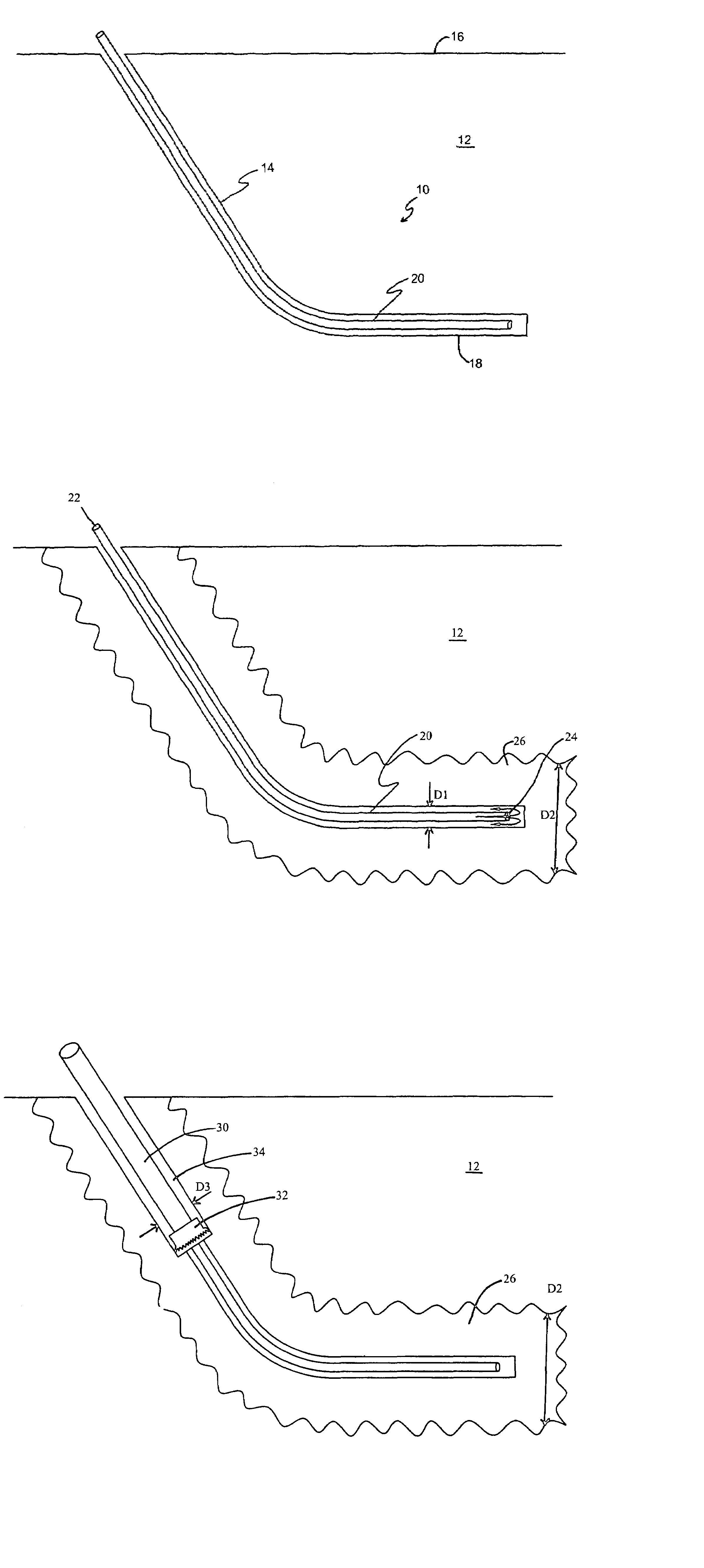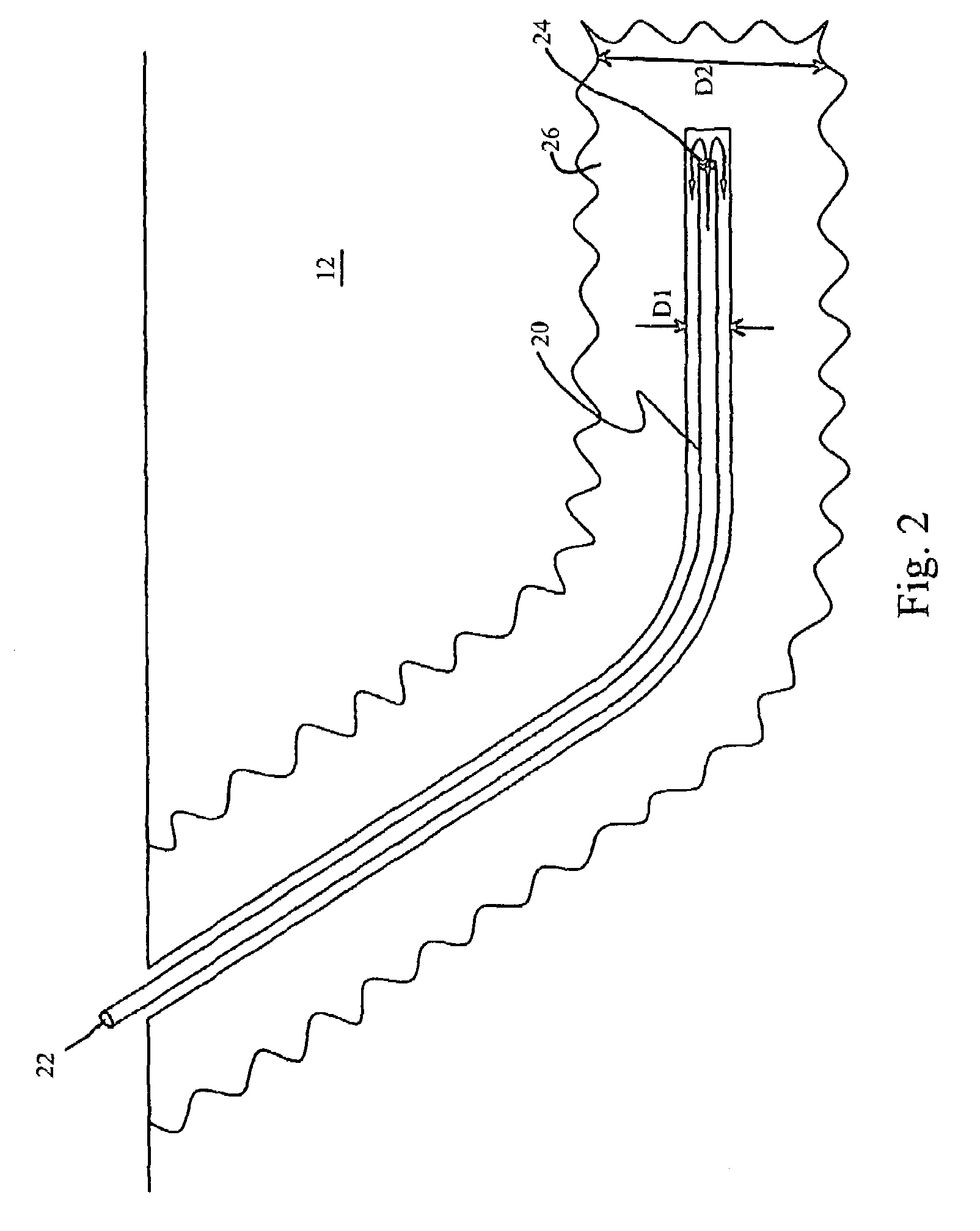Horizontal bore cryogenic drilling method
a cryogenic drilling and horizontal bore technology, applied in the direction of directional drilling, borehole/well accessories, lighting and heating apparatus, etc., can solve the problems of insufficient screen length, inability to produce water by traditional vertical wells, and inability to produce water by vertical wells as much, so as to prevent the collapse of the freeze zone, prevent the efficient flow of water, and large enough diameter
- Summary
- Abstract
- Description
- Claims
- Application Information
AI Technical Summary
Benefits of technology
Problems solved by technology
Method used
Image
Examples
Embodiment Construction
[0028]The present is invention contemplates the use of standard horizontal directional drilling equipment with only minor modifications to accommodate the cryogenic fluid. One representative manufacturer of horizontal directional drills is the Vermeer Manufacturing Company of Pella, Iowa. These horizontal directional drills allow the formation of bores having an initial portion transverse a surface of the earth which then transitions to a horizontal portion of a horizontal bore.
[0029]As mentioned above, use of cryogenic fluids may require modifications to standard horizontal directional rigs. For example, it will likely be necessary to provide a substitute material for low carbon steel used in conventional drill strings because the low carbon steel may become too brittle at cryogenic temperatures. For vertical drill strings, use of aluminum drill pipe or steel pipe containing 9% or more nickel has been suggested. Weaver, U.S. Pat. No. 3,774,701, at column 2, line 68–73. Use of cryog...
PUM
 Login to View More
Login to View More Abstract
Description
Claims
Application Information
 Login to View More
Login to View More - R&D
- Intellectual Property
- Life Sciences
- Materials
- Tech Scout
- Unparalleled Data Quality
- Higher Quality Content
- 60% Fewer Hallucinations
Browse by: Latest US Patents, China's latest patents, Technical Efficacy Thesaurus, Application Domain, Technology Topic, Popular Technical Reports.
© 2025 PatSnap. All rights reserved.Legal|Privacy policy|Modern Slavery Act Transparency Statement|Sitemap|About US| Contact US: help@patsnap.com



